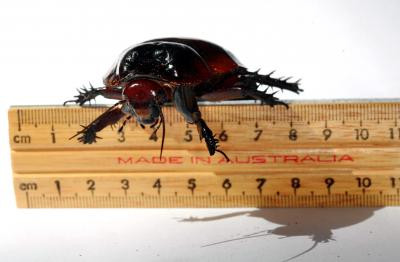When did cockroaches first appear on Earth? Fossil records hint they may be 235 million years old
The last ancestors of cockroaches appeared on Earth around 95 million years earlier than previously thought.

Cockroaches are often joked about as being one of the most invulnerable creatures on Earth, who may even outlast humans long after a nuclear apocalypse. But when did cockroaches first appear on Earth? Fossil records have helped scientists trace back the evolutionary history of the cockroach to around 300 million years ago, when the massive Pangaea supercontinent was formed.
Scientists suspect that cockroaches spread across the world, like "riding a raft" via seismic continental shifts when Pangaea began to be formed. Pangaea was formed when the ancient supercontinent Gondwana collided with the other smaller continents. Scientists found that various sister cockroach lineages diverged before Gondwana began breaking up.
According to the new study, researchers estimate that the last common ancestor for cockroaches appeared around 235 million years ago. This is around 95 million years earlier than the first appearance of fossils attributed to modern cockroaches during the Cretaceous Period and much before the Pangaea supercontinent broke up.
"Our results indicate that extant cockroach families have evolved over periods of up to ~180 million years," said Dr Thomas Bourguignon, lead researcher of the new study and professor at the Okinawa Institute of Science and Technology, Phys.org reported. "Through reconstructions of the ancestral distribution of cockroaches using the known distributions of extant genera sampled in this study, we found evidence that continental breakup has had important impacts on cockroach biogeography."
Dr Bourguignon and his team performed the first molecular dating to uncover the biogeographical history of cockroaches. The scientists estimated the divergence times of all cockroach families, based on the mitochondrial genomes of 119 cockroach species. The researchers then compared this data with 13 termites, seven mantis and multiple other outgroups to aid their molecular dating.
"We believe that our results point to an important role for vicariance (continental drift) in determining the global distributions of cockroaches," said Bourguignon. "On a global scale, the fossil record also agrees with our hypothesis."
The new study has been published in the journal Molecular Biology and Evolution.






















